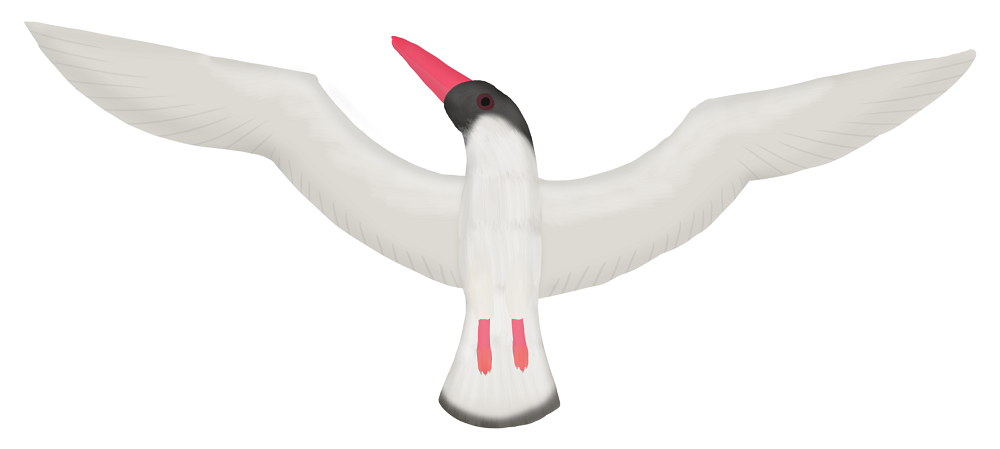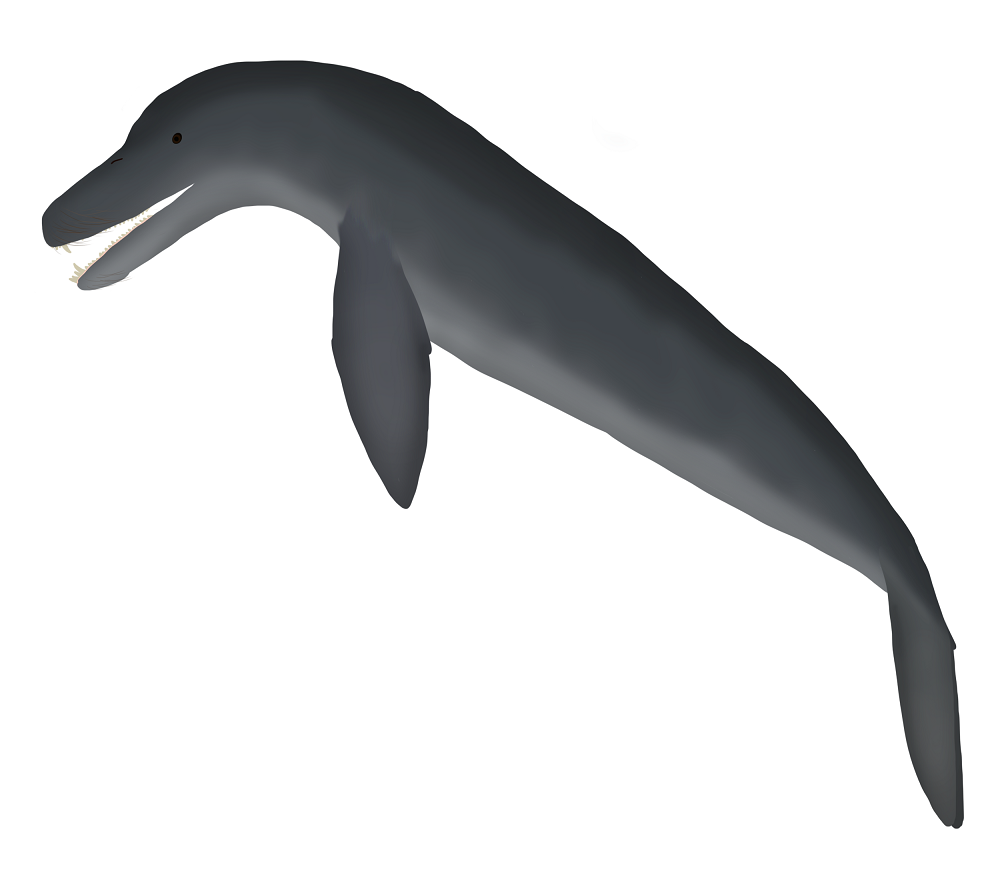
Peruvian Coastline
50 million years hence

50 million years in the future, the western coast of South America is largely the same as it was in the time of humans. On land, the coast is still an arid rainshadow desert, with few animals able to prosper in the harsh conditions. Offshore, the seas are thriving with fish stocks that have long since recovered from human harvesting. Upwelling caused by the movement of ocean currents in the southeastern Pacific continues to make these waters some of the richest in the world.
Many animals of the Peruvian coastline subsist on the fish, including as a swimming species of cat. Pinnipeds and seabirds continue to fish these waters, but they have changed since the Holocene. Some of the pinnipeds in these waters are completely marine. Closer to the shore, marine pigs graze upon coastal seagrass, and large predatory birds prowl the coasts.
| Bladewing | Diving-vulture | Great sea bear | South American meerschwein | South American ottercat |
|---|---|---|---|---|
|
Click on a tab to learn more about that species.

Sirenichoerus beebeiDescended from pigs, meerschwein are a clade of marine mammals that evolved in the early Epigene, filling the aquatic herbivore niche that had been previously filled by desmostylians and sirenians. Although they are entirely herbivorous, they are aggressive and considered highly dangerous. Different species can be found across many coastlines, with notable exceptions being Antarctica and the north Atlantic. The South American meerschwein is a common sight along the Peruvian coast 50 million years in the future. They can be found in shallow coastal waters, grazing on seagrasses and kelp. This species bears a prehensile trunk which assists with this. Clawlike hooves are still present on the front and hind limbs; these are used when hauling out onto land, as well as anchoring individuals to rocks upon which they graze. Medium-sized colonies may be found along beaches and flat coastal rock outcrops. The compositions of these are relatively loose, consisting of individuals either resting or attempting to breed at the moment. Males, which bear prominent tusks, are highly territorial and will proclaim their spots with loud, gravelly roaring noises. 
Smilopterus celerSome lineages have not changed much in the past 50 million years of seabird ecological turnover. Petrels and gulls, for example, have not changed very much, and continue to fill the same niches as they once did. Other birds may seem to have not changed much, but do not be fooled. Bladewings may be compared to terns or tropicbirds, but those lineages are extinct; these Telogene birds are descended from modern gulls. Bladewings are a common group of birds, found along coastlines worldwide. So named for the outline of the edges of their wings, they are noted for being very fast and agile in flight. Bladewings catch their prey by plunge-diving into the water. One individual was noted to plunge into a cresting wave and exit on the other side without losing much momentum. Their prey consists primarily of small pelagic fish, with a small proportion consisting of squid. Bladewings nest on coastlines in large, dense colonies. They can nest on nearly any surface if necessary, but colonies prefer bare rocky coasts. Wingspans in most species range between 80 and 130 cm. 
Hydrofelis chilensisFeral cats started diversifying almost immediately after the disappearance of humans. By the beginning of the Telogene period, one lineage had taken root as a major lineage of marine mammals. These so-called ottercats can be found along coasts worldwide, even in Antarctica. As with sea otters, they lack blubber and are insulated by two layers of fur. Different species range between 60 cm and over 5 meters. The South American ottercat ranges across the coasts of South America, being more concentrated in tropical regions. The average individual is 150 cm in length, with very large individuals exceeding two meters. Like all cats, its webbed feet bear retractable claws. Its skull is robust and has flattened, crushing molars, and can produce a bite force of around 400 N/cm^2. It has a generalized diet, which may include fish, mollusks, crustaceans, echinoderms, and seabird eggs. 
Dyptogyps sp.Seabird communities have changed significantly 50 million years in the future. The impact that humans caused on the oceans had a major effect on aquatic birds. Seabird diversity decreased at the end of the Quaternary, with some clades such as pelicans and albatrosses going extinct entirely. But by the mid-Telogene, new birds have evolved to fill these niches, and seabird biodiversity is high once again. Diving-vultures are large and portly birds, with wingspans of up to three meters in large individuals. The genus Dyptogyps ranges along the coasts of South America and western North America. They are characterized by their brightly-colored heads, including throat pouches that take on vivid colorations during the breeding season. As the name implies, these birds are piscivorous, diving for food. Diving-vulture eyes have a thick but transparent nictitating membrane, allowing an individual to see prey and pursue it underwater. Although their ancestors had good senses of smell, diving-vultures lack external nostrils entirely; instead the internal nostrils house salt-removing glands. 
Kujirotaria grandis50 million years in the future, the majority of cetaceans have become extinct. Cetacean diversity has been in decline since the Miocene, and human persecution has not helped. Only a few lineages of dolphin have made it this far. The extinction of larger whales have left larger predatory niches open, to be filled by descendants of other taxa. The great sea bear is descended from sea lions. It is completely marine, and is unable to stand on land; the hind feet have formed a semi-fused, flexible fluke. The great sea bear reaches lengths of up to eight meters. It is an apex predator; its diet consists of sharks, seabirds, marine reptiles, large fish and cephalopods, and smaller marine mammals. Sea bears have a distinctly flexible neck, and sometimes kill prey by thrashing it to pieces. Sea bears live solitary, except for mothers and offspring, who may stay together for over a year after birth. |
| ← Ethiopia, 40 myh | Telogene-Tularean Extinction → |